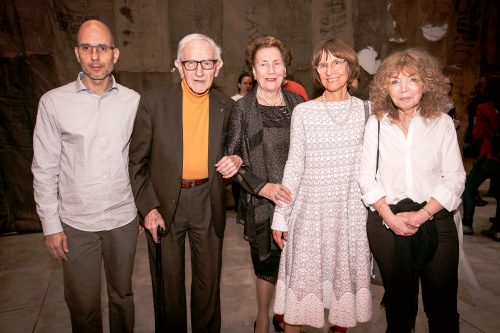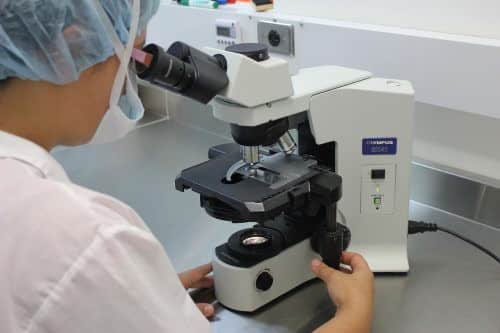
The winners of the 2017 Rapaport Prize for excellence in biomedical research of world order have been announced. Rapaport prizes for biomedical research will be awarded to Prof. Michal Schwartz and Dr. Gad Asher from the Weizmann Institute of Science. For the first time, a prize will also be awarded to four outstanding researchers on a direct path to a doctorate.
Rapaport awards for excellence in biomedical research will be awarded this year to Prof. Michal Schwartz, a senior biomedical researcher, and to Dr. Gad Asher, a young biomedical researcher, both from the Weizmann Institute of Science. This year it was decided by the Baruch and Ruth Rapaport Foundation in collaboration with the Rapaport Institute for Research in Medical Sciences to expand the existing framework of awards, and a special award is given to four outstanding researchers who are on a direct path to a doctorate: Gal Levy and Ido Sagi from the Hebrew University of Jerusalem, Mein Levy from the Weizmann Institute of Science, and for the first time to a representative of Tel Aviv University - Sharon Fleischer.
Prof. Aharon Chahanover, chairman of the judging committee, said: "The decision to expand the framework of the awards was made with the aim of encouraging continuity in scientific research at all levels, and also helping the younger generation of researchers. I believe that giving the prize also to outstanding students for a third degree (doctorate) is an important recognition of their scientific work, and will encourage them to continue climbing up the academic-research ladder in the hope that their work will in the future lead to groundbreaking research and developments for the benefit and well-being of all humanity. The Rapaport Award for Biomedical Research now covers the entire range of researchers - from the students who have already passed through them to researchers who have already demonstrated impressive abilities in their work."
Irit Rapaport said: "The Rapaport Award is for us the essence of the vision outlined by my parents, the late Baruch and Ruth Rapaport. We translate through the awards enterprise the roots of the family heritage: the values we received, which we cultivate, and pass on, on a personal-family level and to society as a whole. By encouraging excellence in research, art and female-social action, we believe that we are contributing to significant social changes in Israel."
The decision on the award winners was made by an independent judging committee headed by Prof. Aharon Chakhanover. Two new judges were added to the committee this year: Prof. Ada Yonat from the Weizmann Institute of Science, winner of the 2009 Nobel Prize in Chemistry, and Prof. Rafi Biar, director of the Rambam Medical College.
The Rapaport Award for Biomedical Research was founded by the Baruch and Ruth Rapaport Foundation in 2010 and is awarded annually to scientists for medical or biomedical research that has excellence, breakthrough, or innovation and that contributes to the advancement of human health and the common good. The research must have real and practical therapeutic implications for the benefit of humanity.
The prize winners
Michal Schwartz, full professor of neuroimmunology at the Weizmann Institute of Science, is one of the world's leading scientists in her field, and was recently elected as the president of the International Association in the field of neuroimmunology.
Already during her PhD, Prof. Schwartz was interested in the possible similarity between the "plasticity" of the immune system and that of the brain, and at the end of it she began to combine chemical immunology with the field of the brain. Later it was discovered by her that the immune system is a "life medicine for the brain". Prof. Schwartz studies the dialogue between the immune system and the brain. The focus of her research is deciphering the maintenance and healing mechanism of the brain by the immune system and the consequences of this dialogue between the two systems, the brain and the immune system, for brain aging and degenerative diseases of the brain. Prof. Schwartz is not only a pioneer in this field, but the theory she developed regarding the brain's need for the support of the immune system was in complete contrast to the model that had been accepted for years. This theory is accepted today as one of the innovative theories that help crack some of the mysteries of the brain.
Her research reached its peak in 2016 when she proposed a possible way to use - in the future - the immune system as a treatment for Alzheimer's disease (Nature Medicine). This innovative research, carried out in mice, led to the establishment of the start-up company that will focus on developing a future treatment for Alzheimer's disease, based on these ideas and findings. This will be the first time that a therapeutic approach based on the activation of the immune system (rather than a treatment aimed directly at the brain) will be tried as a way to fight Alzheimer's disease
Dr. Gad Asher He began his academic career in the field of mathematics, then moved on to medical studies, which he graduated with honors. During his specialization in internal medicine, he enrolled in PhD studies and since 2006 has been devoting all his time to research, first at the University of Geneva and since 2011 at the Weizmann Institute of Science, where he is a senior researcher in the Department of Biomolecular Sciences.
Dr. Asher's research deals in circadian clocks. These clocks operate on a 24-hour cycle, and daily monitor a wide variety of physiological processes in the human body such as: wake and sleep times, daily changes in heart rate, blood pressure, kidney function, body temperature, and hormone secretions. The master circadian clock in the brain synchronizes millions of clocks scattered in every cell in our body. Dr. Asher and the members of his group are engaged in a molecular understanding of the activity of the circadian clocks at the cellular level and intracellular organelles, how the central clock in the brain synchronizes the clocks in the other organs of the body, and what are the interrelationships between circadian clocks and various metabolic processes and nutrition. Along with these basic questions, Dr. Asher's groundbreaking research in the field of biological clocks has important consequences in the treatment of many physiological phenomena such as jet lag, sleep disorders, obesity, diabetes and aging.

Prize for the young researchers
This year a new award category was established for outstanding PhD students in the life sciences and engineering who are at the beginning of their research careers, who together with the old award winners are role models and place biomedical research at the forefront of global research.
Gal Levy - Hebrew University of Jerusalem
Developed innovative metabolic models for the study of disease and drug toxicity. In his work, he developed for the first time the regeneration of a liver using a genetic switch that allows human liver cells to multiply in laboratory conditions without losing their unique activity. In addition, he created for the first time the metabolic profile of human liver cells infected with viral hepatitis C and thus revealed how viral infection affects cellular metabolism.
A kind of Levi - Weitzman Institution of Science
focuses her research on the mechanisms that allow a proper balance to be maintained in the intestinal mucosa and especially in the inflammasome known as NLRP6. She identified metabolites (small molecules) capable of influencing the activation of the inflammasome as well as the secretion of the cytokine IL18 and anti-bacterial molecules. These results suggest a mechanism through which the microbiota and the host together create a healthy niche in the gut. The research suggests a new type of treatment called Post biotics and uses metabolites from the bacteria that can affect the host's immune system function. This treatment bypasses the changes that can occur in the bacterial population in disease states and acts directly on the molecular mechanisms of the disease and offers a promising alternative for future treatment.
Ido Sagi - The Department of Genetics at the Hebrew University of Jerusalem
His main research topic is the production and characterization of cellular Race the haploids from a person Most cells in the human body are diploid, carrying two copies of the genome, while the only cells that carry one copy and are considered haploid are the reproductive cells. In his research, Ido Sagi was able to isolate haploid stem cells from a person for the first time, and demonstrate the similarities and differences between them and diploid cells. Stem cells from a person also have tremendous potential in regards to treatments based on cellular therapy, thanks to their diverse developmental potential and the possibility of directing them to become different types of cells in culture. The haploid stem cells discovered in this study may also be used in the future to develop treatments for diseases such as blindness and diabetes and may even be used for fertility purposes.
Sharon Fleischer - Tel Aviv University
Sharon Fleischer's research deals with the field of cardiac muscle tissue engineering. Today, the most effective solution for the treatment of heart failure situations is a heart transplant. Since the number of donors is very small in relation to the number of patients needing a transplant, there is an immediate need to find alternative solutions for these patients. Sharon's innovative work advanced the field of myocardial tissue engineering one step forward towards the clinic. Continued development of this work could lead to the salvation of millions of heart patients worldwide.

One response
The developments in the field of the brain, including medicine and biochemistry, carried out at the Weizmann Institute are already beyond science fiction.
It's a shame that the media hardly hears anything about it.
With all due respect to high-tech and respect - there is no balance between biological sciences, chemistry, physics and high-tech (or what today is called high-tech, which is actually writing sophisticated applications for computers and existing technologies, there is almost no scientific innovation in this) when there is an exit for some application in high-tech, it's a lot of money and then you fill half newspaper and talk about it for hours on TV.
When there are such amazing and ingenious scientific developments, at most an article is published in Hidan or in a scientific section in the country that very few people read.
It's good that there is a "Rappaport Prize" otherwise we wouldn't have heard of these wonderful geniuses at all.